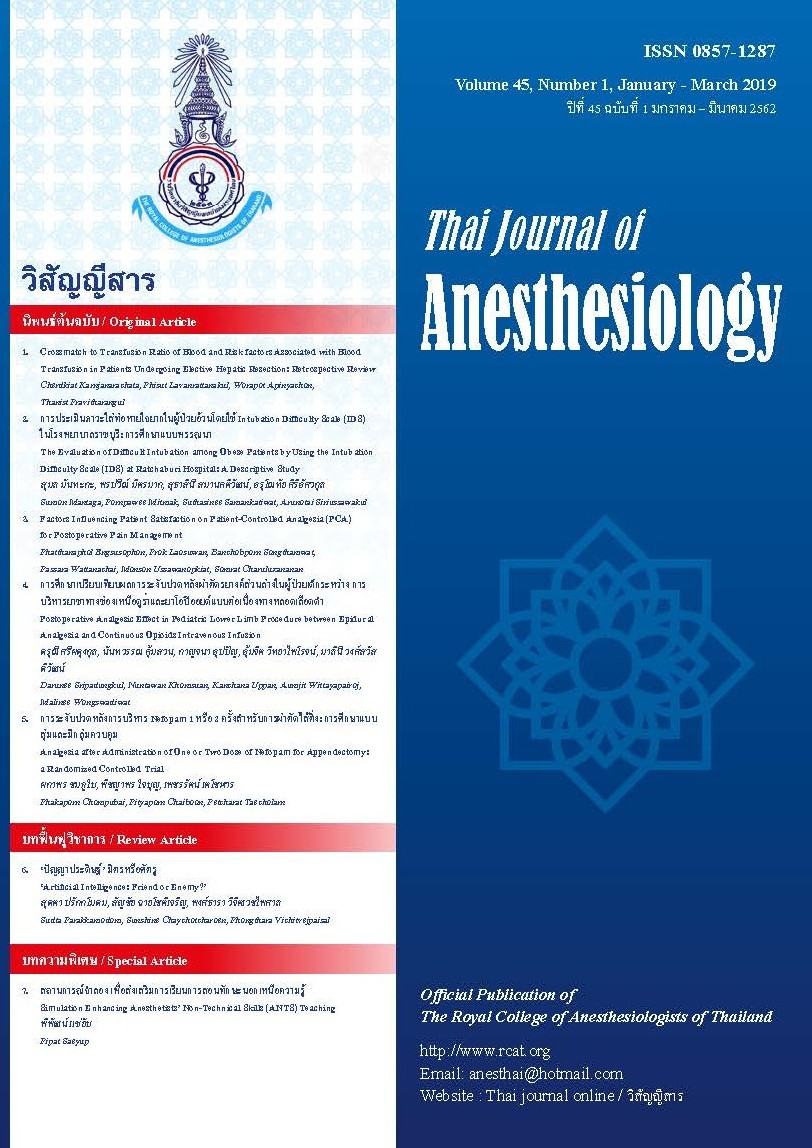Postoperative Analgesic Effect in Pediatric Lower Limb Procedure between Epidural Analgesia and Continuous Opioids Intravenous Infusion
Main Article Content
Abstract
Background: Controlling pain after pediatric lower limb
surgery has several methods. However, there are no
comparative studies for postoperative analgesic effect in
pediatric lower limb procedure between epidural analgesia
and continuous opioids intravenous infusion.
Objectives: We compared epidural analgesia and
continuous opioids intravenous infusion after general
anesthesia for postoperative analgesic effect and
complications in pediatric patients.
Methods: A retrospective descriptive study was enrolled
in pediatric patients who underwent elective lower limb
surgery and received different postoperative pain control
between 2012-2014.
Results: One hundred-eleven patients were divided into
3 groups; continuous epidural analgesia (Epidural group)
(n=33), caudal block with continuous opioids intravenous
group (Caudal with intravenous group) (n=32) and
continuous opioids intravenous group (Intravenous group)
(n=46). Morphine consumption after pediatric lower limb
surgery in Epidural group were significantly lower than
Caudal with intravenous group and Intravenous group
(mean 0.07 ± 0.04, 0.38 ± 0.20, 0.34 ± 0.22 mg/kg/day,
p<0.001 respectively). Pruritus within 24 hours and after 24 hours of surgery were adverse effect significantly in
Epidural group than Caudal with intravenous group and
Intravenous group (p=0.003 and p=0.038 respectively).
Conclusions: Continuous epidural analgesia for
postoperative pain control in pediatric lower limb surgery
patients was the best choice for reduction morphine
consumption.


